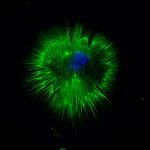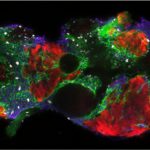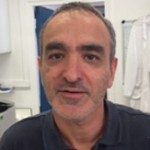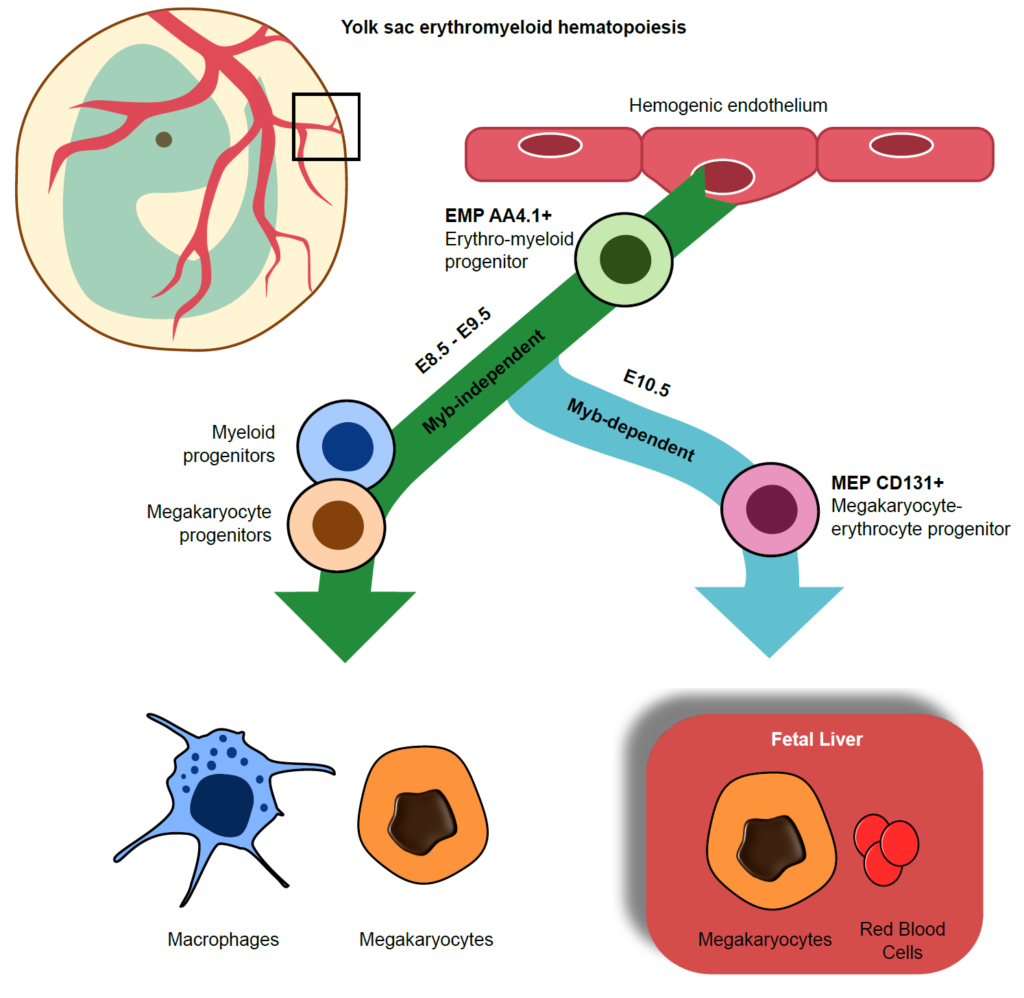How does the embryo build the variety of blood and immune cell types required later in life, from red cells to platelets, lymphocytes and macrophages? The team of Elisa Gomez Perdiguero works to better understand this precise choreography involving different cellular actors at a timely pace. Resolving the origin and development of blood cells during development is indeed crucial to better understand pediatric hematological disorders, which often differ substantially from their adult counterparts: while several pediatric blood disorders resolve spontaneously, other hematological diseases, such as hemoglobinopathies, are asymptomatic at birth.
Besides the hematopoietic stem cells (HSCs) that produce blood cells during adulthood, Elisa Gomez Perdiguero and her team focus on the specific role of erythroid/myeloid progenitors (EMPs) that emerge from the hemogenic endothelium of the yolk sac. This extra-embryonic membrane, attached to the placenta, is the first embryonic site where blood cells are produced, a process long thought to be transient and very rapidly taken care of by HSCs. This latest study published in Immunity characterizes the spatio-temporal dynamics of the EMPs during the embryonic development in a murine model, uncovering a more complex differentiation pathway than previously described.
Using multiple approaches including high-parameter flow cytometry, single cell RNA-sequencing and lineage tracing, they show EMPs form a more heterogeneous population that previously known. EMPs undergo two distinct stages of differentiation. The first one is established in the yolk sac where there originate, to form directly and rapidly macrophages and megakaryocytes. The second one occurs later during development, when EMPs subsequently differentiate into committed megakaryocyte-erythrocyte progenitors and myeloid progenitors, which then migrate in the fetal liver, to form a broader variety of cell types: megakaryocytes and macrophages but also erythrocytes, monocytes, granulocytes and mast cells.
This study shows that megakaryocytes, the cellular source for platelets, are produced via two distinct differentiation pathways, both involving EMPs at different stages of the embryonic development. Generating megakaryocytes and the platelets they produce, in sufficient numbers and early in development is crucial not only for blot clotting and hemostasis, but also for the development of the vascular system, and in particular for the proper separation of the blood and lymphatics systems.
Megakaryocyte production is sustained by direct differentiation from erythromyeloid progenitors in the yolk sac until midgestation, Immunity, May 31, 2021
To read the article: here







